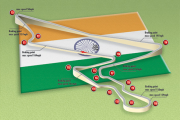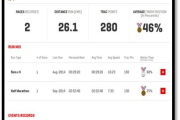Formula One as a sport, in the past few years been criticised for allowing itself to become monotonous. The sport also has seen a steady decline in competition and intense races that were once in the blood of the sport. To bring F1 back, its management and teams have been knocking their heads together to chalk out a revival plan which would be implemented in 2017. The Formula One cars are set to become ‘louder’, rev higher RPMs and laps the circuit faster compared to 2015 and 2016, expectedly.
The problem stared in 2014, when the regulations changed to make F1 more environmentally friendly. A new hybrid turbo engine and related changes were introduced, making the car smaller and slower. The promise as a compromise aimed at reducing fuel consumption by 40%. With that the regulations stated each team to use an upper cap of 100Kg of fuel per race. Cars which are planned next year will be designed with bigger engines and higher downforce generation.
Renault technical chief, Nick Chester has warned that if the current 100Kg allowance is not increased with the arrival of faster and heavier cars, the sport risks of turning into a ‘fuel-saving’ frenzy. The decisions has been taken after extensive meets and with the teams voting for the change. However, Nick points out that the fuel load would be a critical issue which could hamper the sport dramatically.
When asked by Motosport.com what would happen if the 100Kg limit stayed, Chester said, “I think it will be a mess. At the tech regulations meeting, we voted to get rid of the race fuel limit. We still have the flow limit, so you have a green message that cars cannot consume too much, but abolishing the fuel limit will get rid of lift and coast and having to manage fuel, which seems like a good thing for racing.”
Nick also mentioned that the cars in 2017 with heavier and bigger engines would require drivers to throttle harder and for longer time in each race to maintain fast lap times. Also, with a new ‘cockpit’ design to keep drivers safe during accidents, the weight of the car is bound to increase manifold. With a limited fuel on board, the drivers would rather be asked to concentrate on crossing the finish line rather than actually getting to race which was the case in 2015.
Tags: 2017, F1, Formula One, Motorsport, Motorsports, Sport, Sports














